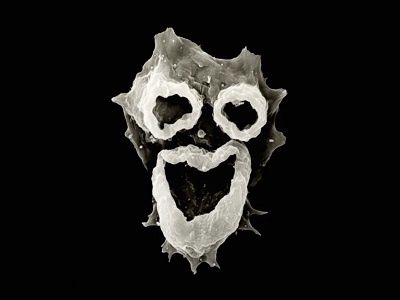A 'brain-eating amoeba' was behind the mysterious death of an eight-year-old Argentine boy, scientists have confirmed, marking the first fatality in Argentina triggered by the terrifying parasite.
RELATED:
US Woman Found with Eye Worm Previously Known Only in Cattle
The death initially threw doctors last winter, after a swim in a local lagoon sent the Buenos Aires local into a feverish fit of headaches and vomiting. Health professionals misidentified the disease as meningitis. Within a week, the boy was dead.
However, city health officials confirmed Thursday that the victim's death was caused by Naegleria fowleri. The rare and deadly organism resides in slow-moving or standing bodies of water and typically feeds on pond germs. However, if it enters the human body through the nose, it will turn to the brain for food.
The amoeba's cranial cravings cause meningitis-like symptoms due to inflammation in and around the brain. Some of the more common symptoms include a headache, stiff neck, nausea and fever.
"We would suspect that the patients themselves are not very aware of what's happening in the later stages," Dr. Jennifer Cope, from the Center for Disease Control and Prevention (CDC), told Vice.

Argentine health officials have admitted that, until now, the parasitic disease has been largely overlooked and the nation's waters have never been thoroughly investigated.
"Though it's the first case, that doesn't mean there aren't others," said Clarin Sixto Raul Costamagna, former president of the Argentine Parasitological Association. "There could have been cases on the coast."
The parasite thrives in warmer temperatures (46 degrees Celsius or 115 degrees Fahrenheit), with most cases appearing in the summer months. The fatality rate from the Naegleria fowleri is 97 percent.
RELATED:
Fixing Broken Hearts, One Cell at a Time: Beating Heart Disease
Costamagna cautions that bathing in contaminated bodies of water, such as lagoons where sewage deposits are common and ripe with bacteria, should be avoided.
As alarming as the parasite is, the CDC says swimmers are more likely to die by drowning than by coming into contact with the rare water creature.
"There are 3,500 fatal drownings annually in the United States, and we can compare that to just a handful of Naegleria infections that get reported each year," Dr. Cope said.
Over the past 50 years, 143 Naegleria infections have been reported in the United States, with only four survivors. From 2007 to 2016, a total of 40 cases were reported in the United States.